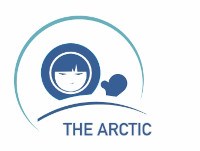An immense island, separating the Arctic Ocean from the Atlantic, Greenland is the world’s largest island with an area of around 2.2 million sq. km, only some 410,000 sq. km uncovered by ice.
The Greenland ice sheet is the second largest in the world. With the exception of a few sheltered valleys in South Greenland, the climate is Arctic and the average temperature during the warmest month of the year does not exceed 10°C.
Greenland was first inhabited by Inuit for more than 4000 years ago. The Europeans became regular quests in 16th century due to whaling and after Norwegian-Danish rule for centuries, Greenland became a Danish colony in 1814.
During the decolonization period following the World War II Greenland's colonial status was abolished and the island was integrated into the Danish Kingdom in 1953.
In 1 May 1979 following a referendum in Greenland, a Greenlandic Home Rule, an autonomous entity, was created granting Greenlanders own parliamentary organ as well as government. The Home Rule government gained jurisdiction in a series of important fields, such as internal administration, taxes, religious matters, fishing, hunting and agricultural affairs. Also social welfare, labor market affairs, education and cultural affairs, health service, housing and area protection were moved under internal administration of Greenlanders.
Greenland had joined the ECC (today EU) originally as a part of Denmark in 1973, but opted out from the agreement in 1985 obtaining thus a status as an Oversees country and territory (OCT) with special arraignments regarding its unique circumstances within the ECC. The new agreement with the ECC included among other things fisheries agreement allowing ECC quota in Greenlandic waters in turn of compensation. Greenland gained also territorial allocation from the European Development Fund instead of getting support from the ECC budget.
In 2005, Danish Parliament issued an Authorization Act, which granted Greenland a right to enter into international agreements in the areas that were under the jurisdiction of the Greenlandic Home Rule. This Act was a first step of what would become Self-Government on Sunday, 21 June 2009.
Claimed by both Greenland (still a Danish territory) and Iceland (independent since 1944), Denmark is now claiming that a ridge attached to Greenland should give it sovereignty over the North Pole.
Today, although Greenland has considerable mineral and petroleum deposits, it's economy is mainly built on fisheries, owning the world's largest retailer of cold-water prawn. Greenland has also close cultural, political, social and economic ties with Denmark in the form of annual subsidies of over DKK 2,800m and the free provision of education, hospital and other services to Greenlandic citizens.








